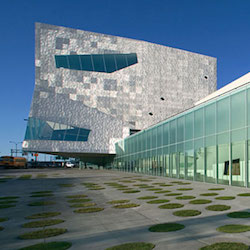Walker Recipe 12: Program Notes
Navigation Menu
- Advocacy Resources
- Artist’s Legacy Toolkit
- Audience Engagement Strategies
- Building Audiences for the Arts: Research and Resources
- Coronavirus Resources
- Dance/USA Fellowships
- Dance/USA Task Force on Dancer Health
- Equitable Contracting Resources
- Funding Resources
- Harassment in the Workplace Resources
- Jobs, Auditions, & Internships
- Key Advocacy Issues
- Music and Choreography Resources
- Mentorship Program: Dance/USA Institute for Leadership Training
- Request a Peer Consultation Letter
- Scheduling Congressional Visits
-

Organization Name: The Walker Art Center
City: Minneapolis
Program Name: Program Notes
Time of Program: The program is offered during both evening and matinee performances
Goal: To provide detailed and pertinent information to audience members about the show, choreographer, and pieces. This is part of Walker’s effort to connect all programs through common audience engagement threads, focusing on developing scalable, replicable models to engage audiences before, during, and after performances.
Time of Year Offered: Year-round throughout the run of the season
Program Description:
For every dance show, we have paper programs that give cast and crew information, and often biographies and statements of the artists involved that audience members can reference pre-performance to learn about the performance. Though program notes are important, see the mixed experiences we have had with this strategy, which are described below and may be of interest to others considering it.
Number of Participants: All audience members receive program notes.
Target Audience: Overall target audience is generally a younger (under 40) tech-savvy audience drawing from the local communities and Walker’s other artistic disciplines.
Private/Public Public
Location: The program takes place at the Walker.
How Many Staff: One to two staff members are required to implement the program. They research, write, edit and print the program and also prepare the program for the Walker channel.
Program Cost: This program does not directly cost the Walker anything beyond staff time.
Attendance To Date: All audience members receive the program notes.
What works? Programs provide crucial information, for example details about the piece, names/roles of company dancers, and the order of movements in a dance piece. Ideally, the Walker hopes our programs would further discourse about the artists presented, with the contextual information we provide acting as a lasting document that audiences can refer to long after the show.
What doesn’t work? Artists and artist management usually have the final say on what goes into our program notes. We have often attempted to include contextual information for our dance programs, such as articles or published interviews, only to have them nixed by the artists. Program notes, thus, are not always the helpful documents we want them to be. The Walker continues to lament the lack of a system to share contextual program content between presenters, artists, and artist management and agents. For example, in museum practices, when an exhibition is touring all the curatorial info is shared between museums. We would love to see a similar system in place for performing arts presentations. Additionally, program notes require tons of paper. For a sold-out dance run that goes from Thursday through Saturday, 900-plus programs are needed, with each requiring 2–5 sheets of 8×11-inch paper.
Performances Where Offered: Extended program notes are for all dance programs.
Past Research on Program: Walker’s EDA-related research included distributing surveys to measure differences in audience’s engagement with the performance, comparing those who participated in Walker’s array of EDA-sponsored activities versus those who did not participate with positive results for those who did participate in the survey. This research was across various types of events, so is not specific to the Program Notes. Engagement activities—particularly post-performance, or a combination of post-performance and online activity, resulted in significantly stronger reports of impact (captivation, feeling challenged, emotional and spiritual resonance, connecting with the dancers on stage, connecting with the audience, and the impression left by the performance) compared to those who did not participate in any engagement activities.
Continuing Program? The Walker is hoping to continue the program and are hoping to “go green” with our programs in the next couple years. We’d like to eschew the paper programs in favor of putting all of the information online. We are open to recommendations and would love to hear what others have chosen to do.
Additional Comments:
Note: This entry was taken from the Walker’s Recipe Book for Audience Engagement, a product that their staff created during Round One of EDA. The full recipe book is available on the Dance/USA website (see links below as well as the EDA Audience Engagement Resource Library).
Resources & Links:
Please see the information about the Walker Art Center and its recipe book on the Dance/USA website
Read a profile about the project, and access related products, including the Recipe Book: https://www.danceusa.org/walkerartcenter
See a resource guide about the project, and view videos from Walker staff about it: https://www.danceusa.org/edalearningexchangescontent
